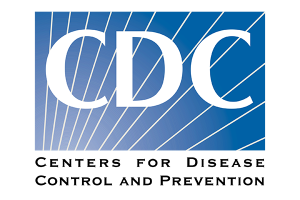Safety In The Water
Originally posted by CENTERS FOR DISEASE CONTROL AND PREVENTION
The Problem
Risk Factors
Prevention
Additional Resources
References
- Centers for Disease Control and Prevention, National Center for Injury Prevention and Control. Web-based Injury Statistics Query and Reporting System (WISQARS) [online]. [cited 2012 May 3]. Available from: URL: http://www.cdc.gov/injury/wisqars.
- CDC. Wide-ranging online data for epidemiologic research (WONDER). Atlanta, GA: CDC, National Center for Health Statistics; 2016. Available at http://wonder.cdc.gov.
- Cummings P, Quan L. Trends in Unintentional Drowning: The Role of Alcohol and Medical Care. JAMA, 1999; 281(23):2198-2202.
- Spack L, Gedeit R, Splaingard M, Havens PL. Failure of aggressive therapy to alter outcomes in pediatric near-drowning. Pediatric Emergency Care 1997; 13(2):98-102.
- Gilchrist J, Parker EM. Racial/ethnic disparities in fatal unintentional drowning among persons aged ≤29 years—United States, 1999–2010. MMWR 2014;63:421–6.
- Branche CM, Dellinger AM, Sleet DA, Gilchrist J, Olson SJ. Unintentional injuries: the burden, risks and preventive strategies to address diversity. In: Livingston IL, editor. Praeger handbook of Black American health (2nd edition): Policies and issues behind disparities in health. Westport (CT): Praeger Publishers; 2004. p. 317-27.
- Gilchrist J, Sacks JJ, Branche CM. Self-reported swimming ability in U.S. adults, 1994. Public Health Reports 2000;115(2–3):110–1.
- Irwin CC, Irwin RL, Ryan TD. Urban minority youth swimming (in)ability in the United States and associated demographic characteristics: toward a drowning prevention plan. Injury Prevention 2009; 15: 234-239.
- Brenner RA, Taneja GS, Haynie DL, Trumble AC, Qian C, Klinger RM, Klevanoff MA. Association between swimming lessons and drowning in childhood: A case-control study. Archives of Pediatrics & Adolescent Medicine 2009;163(3):203-10.
- Yang L, Nong QQ, Li CL, Feng QM, Lo SK. Risk factors for childhood drowning in rural regions of a developing country : a case-control study. Injury Prevention, 2007; 13:178-182.
- U. S. Consumer Product Safety Commission. Safety barrier guidelines for home pools [online]. [cited 2012 May 3]. Available from URL: http://www.cpsc.gov/cpscpub/pubs/pool.pdf.
- Thompson DC, Rivara FP. Pool fencing for preventing drowning in children. Cochrane Database of Systematic Reviews 2000; 2.
- U. S. Consumer Product Safety Commission. Submersions related to non-pool and non-spa products, 2011 report.[online]. [cited 2012 May 9]. Available from URL: http://www.cpsc.gov/LIBRARY/FOIA/FOIA11/os/nonpoolsub2011.pdf.
- Pelletier AR, Gilchrist J. Fatalities in swimming pools with lifeguards: USA, 2000-2008. Injury Prevention, 2011;17:250-253.
- U.S. Coast Guard, Department of Homeland Security (US). Recreational Boating Statistics – 2010 [online]. [cited 2012 May 3]. Available from: http://www.uscgboating.org/assets/1/workflow_staging/Page/2010_Recreational_Boating_Statistics.pdf.
- Cummings P, Mueller BA, Quan L. Association between wearing a personal floatation device and death by drowning among recreational boaters: a matched cohort analysis of United States Coast Guard data. Injury Prevention 2011;17:156-159.14.
- Driscoll TR, Harrison JA, Steenkamp M. Review of the role of alcohol in drowning associated with recreational aquatic activity. Injury Prevention 2004;10:107–113.
- Lhatoo SD, Sander JWAS. Cause-specific mortality in epilepsy. Epilepsia 2005; 46(Suppl. 11):36–39.
- Kyriacou DN, Arcinue EL, Peek C, Kraus JF. Effect of Immediate Resuscitation on Children with Submersion Injury. Pediatrics, 1994; 94 (2): 137-142.



